This creamy oil-free hummus recipe is great as a healthy appetizer, snack, dip, spread, and more. Try this simple, basic recipe or make it your own with a variety of additional flavor ideas! (Vegan, gluten-free.)
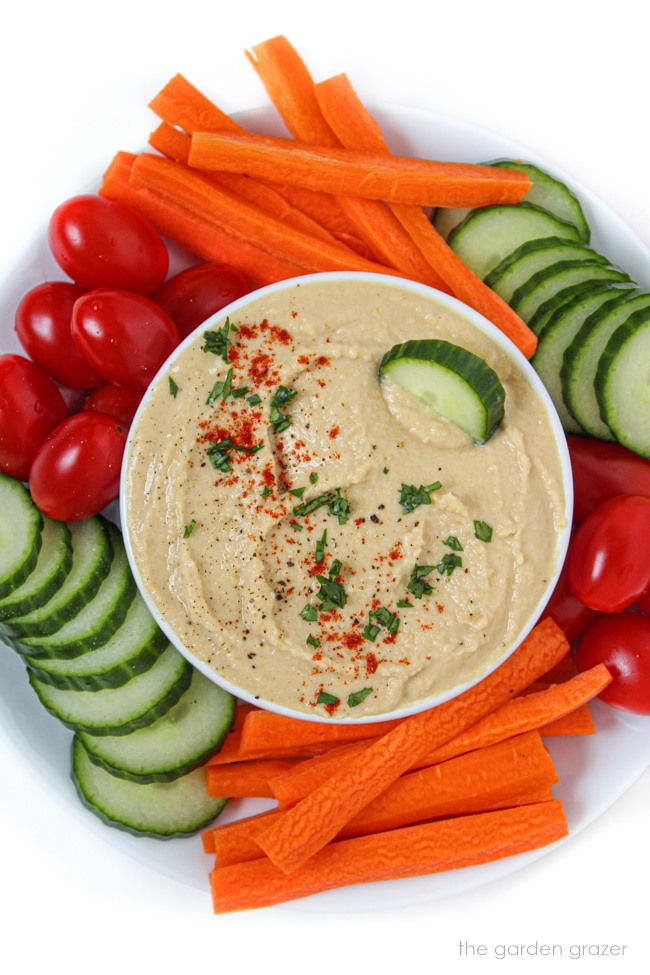
Making your own hummus right at home is so easy and delicious! Plus it tastes so much more fresh than store-bought versions.
It's quick & simple to prepare, plus rich in plant-based protein and fiber. And you can customize it just the way you like!
Traditionally, hummus is enjoyed as a dip or spread, usually paired with pita bread. I hope you enjoy my version of a Middle Eastern-inspired hummus recipe (made oil-free!)
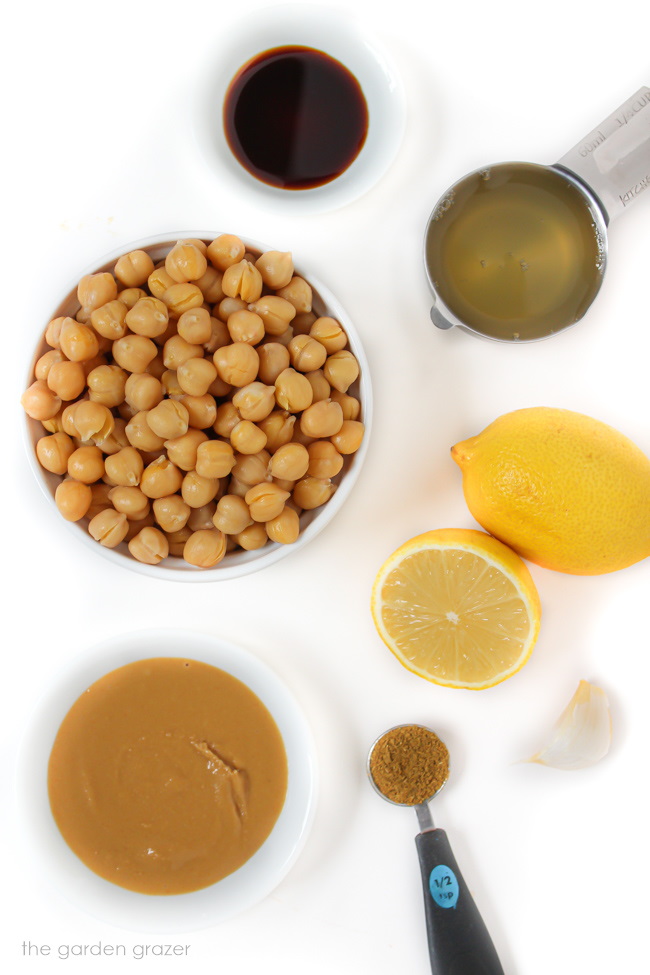
Ingredients for Oil-Free Hummus
For this recipe, you will blend together in a food processor:
- Garbanzo beans (chickpeas): You'll need one 15 ounce can of chickpeas for this recipe. (Or if you make your beans from scratch, then you will need about 1.5 cups cooked chickpeas.)
- Aquafaba: This is the thick liquid you will find in your canned chickpeas. (Be sure to save some before you rinse and drain your beans.) I include aquafaba in my hummus because it helps thicken and bind the mixture. Plus it gives it a delightfully creamy, fluffy, and smooth texture. (I use aquafaba in place of olive oil for an oil-free version.) If you are using home cooked beans, then simply use the cooking liquid in place of aquafaba.
- Lemon juice: Freshly squeezed is best for bright flavor and acidity.
- Tahini: This is a Middle Eastern condiment made from toasted ground sesame seeds. The taste is very distinctive, and it's a major ingredient in traditional hummus. Be sure to find a good quality tahini that is smooth and not too bitter. (It should have a strong, earthy, nutty flavor.) Tahini paste looks similar to peanut butter, but the taste is very different.
- Fresh garlic cloves: You could also use roasted garlic or garlic powder.
- Coconut aminos: I really like this addition for some tasty umami flavor. But if you don't have it, simply omit it. (Or you can substitute with tamari or soy sauce.)
- Ground cumin: You can omit this if you'd like, but I enjoy a hint of the earthy, warming flavor.
- Salt: A small dash of fine grain salt helps enhance and bring out all the flavors.
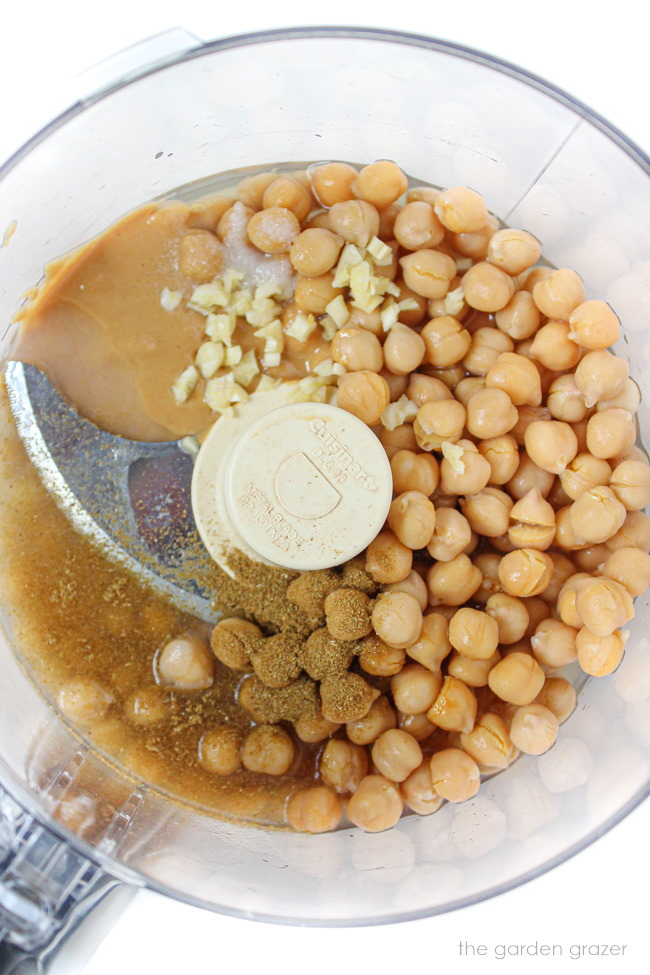
Serving
Homemade hummus is versatile as a snack, appetizer, or healthy condiment. A few ideas for serving include:
Dip: Serve with an assortment of raw vegetables, crackers, or even tortilla chips. Carrots, sliced cucumber, bell peppers, celery, radishes, and grape tomatoes are delicious dipped in hummus. So it can be a great alternative to ranch dip on a veggie tray or charcuterie board.
Spread: Try it on sandwiches, wraps, or burgers as a flavorful, creamy spread. (Like on this Avocado Veggie Sandwich, Greek Salad Wrap, or Roasted Veggie Wrap.) It works great as a healthier alternative to mayonnaise.
Pita bread: Serve with wedges of toasted pita bread, naan, or other flat bread.
Salads: Hummus is also a tasty and hearty addition to salads. My favorite is this Roasted Chickpea Salad with Hummus. Simply dollop the desired amount on top of a fresh salad for a flavorful, creamy twist. (Or if you'd like a hummus salad dressing, then simply thin it out by whisking with a little water.) I like to pair a dollop of hummus with a simple drizzle of balsamic vinegar to finish my salads.
Grain bowls: Try it in a Mediterranean-inspired grain bowl. Pair roasted vegetables with your favorite cooked grain like quinoa, brown rice, barley, farro, etc.
Flavor it! Try this Chipotle Taco Hummus, Cilantro Jalapeno Hummus, or Lemon Dill Hummus.
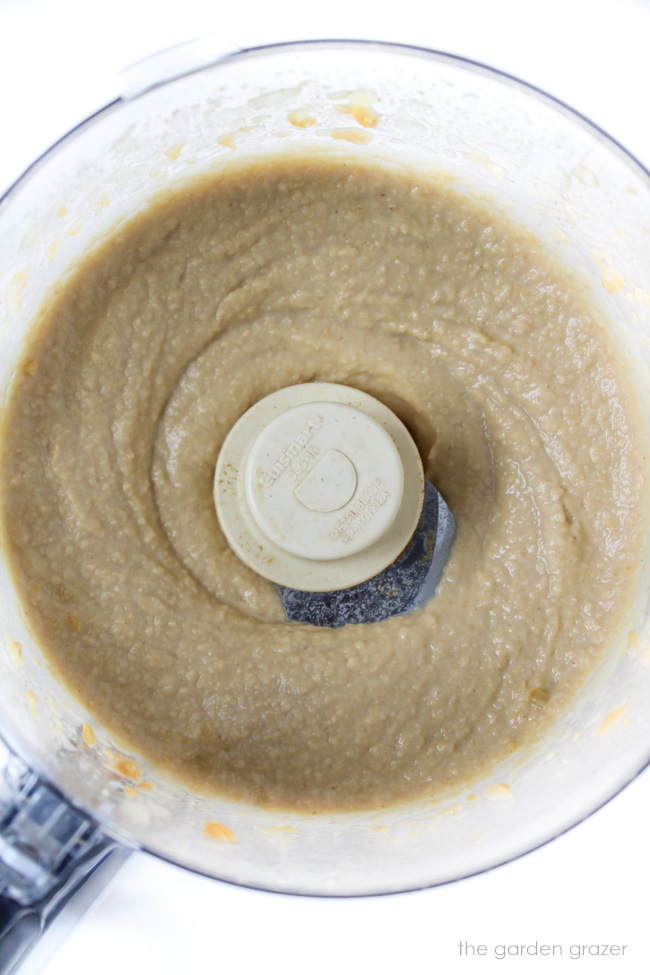
Customizing
Make it spicy: Add a few dashes of hot sauce to taste, chipotle in adobo sauce, cayenne pepper, jalapeno, etc.
Flavored: Add roasted garlic (in place of fresh), roasted red bell pepper, kalamata olives, roasted beets, sun-dried tomato, spinach, artichoke hearts, etc.
Herbs & spices: Add fresh parsley, basil, cilantro, dill, rosemary, curry powder, ground coriander, black pepper, sumac, or smoked paprika (or sweet paprika).
Low fat: This lower-fat version uses only 2 tablespoons tahini (and no oil), but you can use 3-4 tablespoons for a more traditional, thicker & richer hummus.
Storing
Store your leftover hummus in an airtight container in the refrigerator.
We find it keeps well for about 4-5 days. (It can either be served chilled or at room temperature.)
Tip: For extra smooth and creamy hummus, remove all chickpea skins before blending. I don't bother with this, but it's a great way to help achieve an ultra-smooth texture if desired.
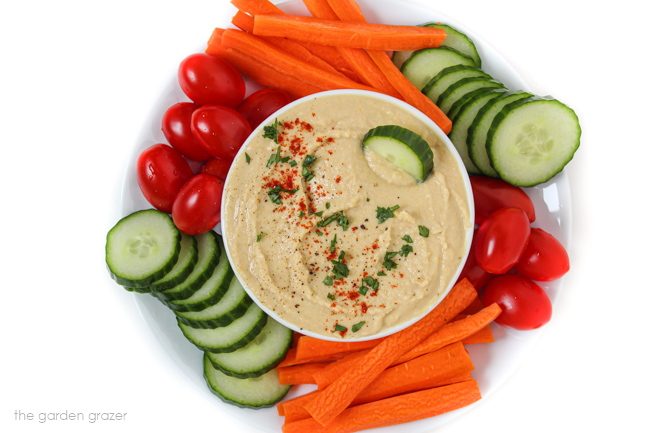
For more inspiration, also browse all vegan dip recipes or chickpea recipes.
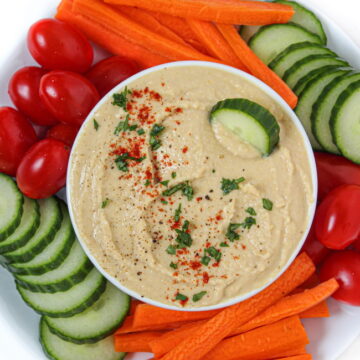
Hummus (Oil-Free)
Ingredients
- 15 oz. can garbanzo beans
- 1/4 cup aquafaba* (or less)
- 1/4 cup fresh lemon juice (about 1 1/2 lemons)
- 2 Tbsp. tahini (or up to 4 Tbsp.)
- 1 clove garlic, minced
- 2-3 tsp. coconut aminos (optional, but recommended)
- 1/2 tsp. ground cumin
- 1/4 tsp. fine grain salt
Instructions
- Open the can of garbanzo beans and reserve 1/4 cup aquafaba.* Then rinse and drain garbanzo beans.
- Add all ingredients to a high-speed blender or food processor. (Start with about 1-2 Tbsp. aquafaba and add more as desired.) Blend until creamy, about 20-30 seconds. Taste and adjust flavors if desired. Add more tahini for a thicker texture.
- Store leftovers in a sealed container in the refrigerator.
Notes
Nutrition Per Serving (Estimate)
Sodium: This is omitted as I cannot provide an accurate number. I encourage you to calculate your own to provide a much more precise reading based on the exact ingredients, brands, and amounts you're using.
If you are enjoying this oil free hummus recipe, also check out:
Follow The Garden Grazer on Instagram, Pinterest, Twitter, or Facebook for more updates and inspiration.


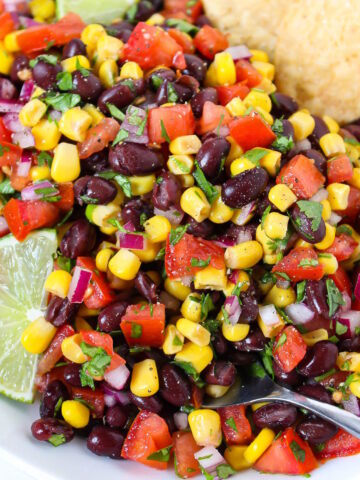
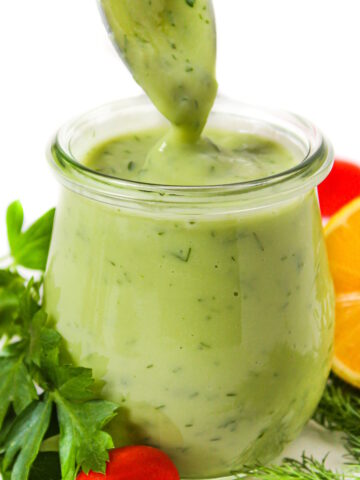
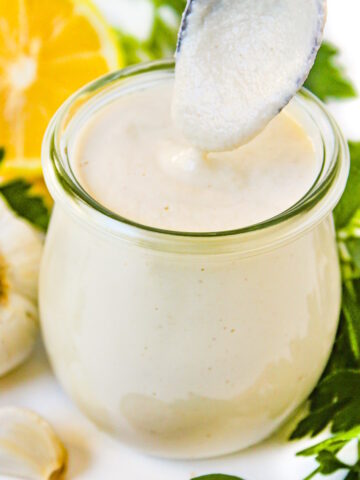
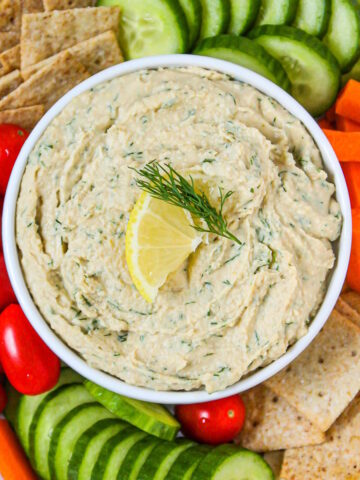
Amanda R.
My favorite hummus recipe, so delicious!! I always add the coconut aminos for tasty umami flavor. Thanks for an oil-free option!
Kaitlin
Wonderful to hear, Amanda! So glad you're enjoying it and thanks for sharing your kind feedback!
Chelsea
This was awesome!! So much better and cheaper than store bought. Thank you!
Kaitlin
Great to hear!